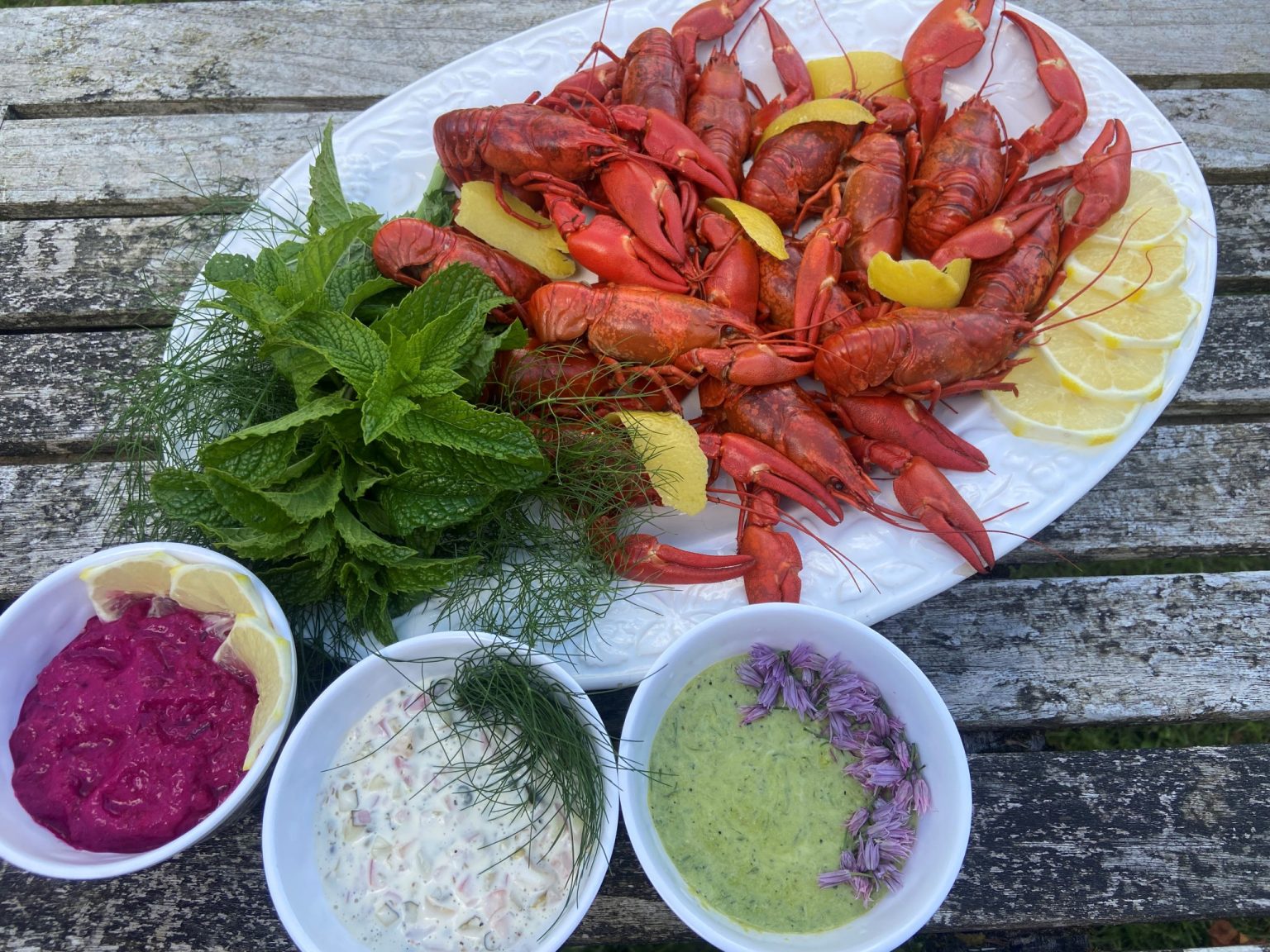Something New – Crayfish for a barbecue: stupendous cold or hot
UK sourced wild Signal crayfish from a chalk stream are a stupendous addition to any barbecue. For a start, literally, you can buy them precooked and supplied chilled, ready to eat, which gives your guests something exciting and delicious to eat while you all wait and watch for the charcoal to hit the right cooking temperature or for the meat to reach an edible, cooked state. Served with dipping sources, the crayfish are easy to peel, look appetising, taste delicious and provide a great talking point to get everyone chatting. Buy them in brine, with a 21 days fridge shelf life from The Kennet Crayfish Company website and prepare your dips the day before (see recipe suggestions below).
f you want to add a non-meat option to your barbecue, which cooks in minutes and is very easy to tell when it is ready, buy some par-cooked crayfish, which you can just butterfly, by cutting from top to tail, and drop on the b-b-q shell side to the heat, turn after two minutes to cook the other side for two minutes, when the flesh is white and hot they are ready to serve. Get plenty because they will be popular. Dips work equally well for cold or hot crayfish:
DIPPING SAUCE SUGGESTIONS FOR CRAYFISH
Anna Fidler, International cook, food-writer and restaurateur working with The Kennet Crayfish Company, has created some recipe ideas for dips to get the party going. Serve with lots of crusty bread to load up your favourite combos!
Dill and red onion tartare sauce:
1 medium red onion, finely diced
1 tsp. salt
2 tbsp. caster sugar
2 tbsp. apple cider vinegar
A little boiling water
2 large dill pickles, finely diced
2 tbsp. capers, chopped
1 small handful of fresh dill, chopped
Approximately 100g of mayonnaise
Salt and pepper to taste
Pour the chopped onion into a heatproof bowl, add the salt and massage it into the onions with your hand. Pour over the sugar, apple cider vinegar and cover in boiling water. Leave to seep for at least 5 minutes. This method lightly pickles the onion, softening and sweetening the flavour. Drain and squeeze the onions, now add all the other ingredients, season and serve.
Beetroot and mint dip:
3-4 bulbs of cooked, pickled beetroot
1 small pot of plain yoghurt (approximately 100g)
Juice of half a lemon
Small handful of fresh mint, finely chopped
Salt and pepper to taste
Blend the beetroot and yoghurt in a blender until smooth. Add lemon juice and stir through the mint, season and serve.
Wild garlic pesto mayonnaise:
Approximately 100g wild garlic pesto (see recipe below)
Approximately 150g mayonnaise
Salt and pepper to taste
Stir together and season, done! Wild garlic is prolific in the UK around April/May time and can be foraged in most shady places, especially near water. It has a unique gentle onion flavour with a back note of garlic perfect as a soft herb in pesto, sauces, salads and anything else you can think of. Easily substituted with a fresh basil pesto, if there is no wild garlic available.
Wild garlic (or classic basil) pesto:
Approximately 200g fresh wild garlic (or fresh basil)
50g Parmesan or pecorino cheese, finely grated
Approximately 50g pine nuts (optional)
150ml cold pressed extra virgin olive oil
Salt and pepper to taste
Tip all the ingredients into a blender and pulse until you have your preferred consistency. The pesto should not be too smooth. Pop into a sealed jar and keep in the fridge. It will keep for weeks and it is also possible to freeze. I would spoon it into an old ice cube tray and, once frozen, squeeze the cubes into a freezer bag for easy use in the future.

